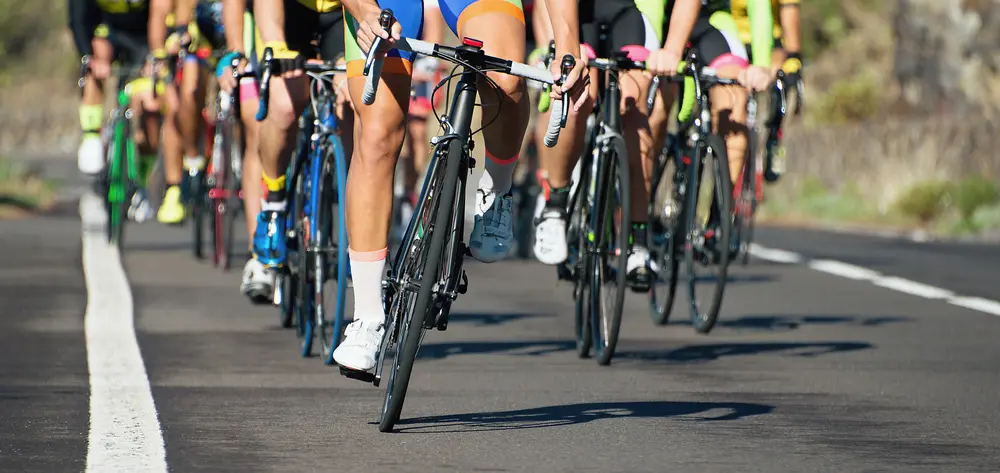
Aug 15, 2017 • 5 min read
A Recap of the 2017 Tour de France
Posted in:
The Tour de France is a big deal. Okay, you probably already knew that. But that doesn’t make it any less true. In terms of viewership, sponsorship and longevity, the Tour de France is one of the biggest sporting events in the world. No training wheels here, folks.
Since the Tour just wrapped up a month ago, we’ll recap the best parts. Enjoy!
What is the Tour de France?
 The Tour de France is an annual bicycle race comprised of 21 different stages (since it’s a multi-day event, the race is divided into multiple portions and terrains). Competitors race on flat, medium mountain, high mountain and time trial stages.
The Tour de France is an annual bicycle race comprised of 21 different stages (since it’s a multi-day event, the race is divided into multiple portions and terrains). Competitors race on flat, medium mountain, high mountain and time trial stages.
As the name suggests, the Tour de France is primarily based in the country of France. However, there are occasions where the race makes passes through neighboring countries.
How did the Tour start?
The Tour de France was first introduced in 1903 to boost sales for a sports newspaper known as Le Vélo (French for “the bike”). The response to the first race was strong, so it quickly became an annual event.
Though the first race was a success, major problems almost ended the Tour De France in its infancy. Specifically, there were issues with cheating and fan intervention during the event. While these kinds of problems are still present, they were far worse in the early years.
After many rule and policy changes, the race eventually began to resemble our contemporary Tour de France (minus the overenthusiastic fans attempting to cycle alongside the athletes). The Tour has been a hit ever since. In fact, from 1903 to the present, the Tour de France has been held every year, except during the World Wars.
Who watches the event?
The Tour broadcasts to 190 countries with 3.5 billion people watching annually. Twelve million spectators attend the race in person, making the Tour de France the largest annual sporting event to date.
What makes it so popular?
With upsets, controversy and stunning victories every single year, the Tour de France holds an unmatched capacity for spectacle and intrigue. In and of itself, the event is much like the Olympics; Riders from all over the world participate in the race, providing a worldwide platform for individual countries to rally behind or against.
Fans cheer from the sidelines for free and actively participate in the experience, giving the event an electric, exciting atmosphere. To top it off, cycling is relatable to almost anyone, since learning to ride a bike is a rite of passage for many kids.
Do Tour de France riders stop to pee?
To my knowledge, the answer to this question has yet to appear under a Snapple cap. Believe it or not, Tour de France competitors have two options when it comes to making the bladder gladder. The first is to stop and go on the side of the road like you might during a long road trip. This option is usually taken at the beginning of the race. (Note: You’ll want to skip this next part if you get easily grossed out.) The second option is for bikers to pee off their bike or down their leg, if need be. Thankfully, this option is only used as a last resort.
What are some quick facts about this year’s tour?
 The Tour de France 2017 began on July 1 in Düsseldorf, Germany and ended on July 23 in Paris, France. This year’s race passed through four different countries including Germany, Belgium, Luxembourg and, of course, France. In total, the race was 3,540 km (2,200 miles) long.
The Tour de France 2017 began on July 1 in Düsseldorf, Germany and ended on July 23 in Paris, France. This year’s race passed through four different countries including Germany, Belgium, Luxembourg and, of course, France. In total, the race was 3,540 km (2,200 miles) long.
What were the results of this year’s tour?
The overall winner of the Tour de France 2017 and recipient of the famed yellow jersey was none other than Chris Froome. This was Froome’s fourth Tour de France victory and third consecutive victory.
The winner of the green jersey (points classification) was Michael Matthews, an Australian rider for Team Sunweb. Mathews is the third Australian to ever win the green jersey.
The winner of the polka-dot jersey (mountains classification) was a Frenchman named Warren Barguil, also from team Sunweb. Barguil won two mountain stages in the tour and has huge potential as a future contender.
The winner of the white jersey (best young rider) was Simon Yates, a British rider for team Orica-Scott. His twin brother, Adam Yates, won last year, making them the first brothers to both win the white jersey.
That’s your recap of this year’s Tour de France! Time to start counting down the days until next year’s event.
Garrett Schaff is a sales and marketing intern at TeamSnap. He is a Colorado native who grew up in
Arvada, Colorado and lives there today. He is perusing an undergraduate degree in economics and
business at CU Boulder. Garrett is an avid outdoorsman and sports player whose passions include fishing and ice hockey. His goals in life are to pursue a career in stock broking and to be able buy a cabin in the Rocky Mountains in order to fully enjoy the outdoors.
